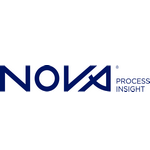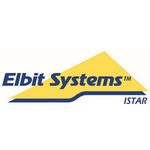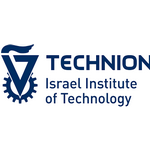
Civan Lasers develops and manufactures Dynamic Bema lasers for material processing. With unique capabilities for welding, drilling and metal AM. The company is Vertically Integrated and has over 55 patents protecting its unique technology. As of today, Civan employs 180 people in Jerusalem, Israel. Civan’s Dynamic Beam Laser systems allows manufacturers to control beam shape, frequency, sequence and focus steering to eliminate spatter, increase welding power and speed. Through their advanced capabilities, Dynamic Beam Lasers open the door to countless new applications.

Accubeat has very specific requirements for VCSELs to be used in chip scale atomic clocks. Accueat proposes to define specifications and requirements for VCSELs and to characterize them once developed within the consortium.

SCD has two roles within the proposed consortium. SCD will develop high power Coherent VCSEL array. To this end, SCD will team with Prof. Segev (Technion) and the Israeli Center for Advanced Photonics (ICAP). The high power arrays will be based on Topological insulator VCSEL arrays. This novel laser will serve as a building block for many high power applications such as high power fiber and solid state laser pumping, direct use in material processing and more. The use of coherent VCSEL array will allow dramatically reduce the size and cost of the diode laser pump units used for fiber lasers (Figure 7). SCD will collaborate with Civan that will define requirements for the fiber coupled module.
The needs of SCD are high power high brightness arrays. These will be developed in two parallel routes. The first one is the topological laser (invented at Techion by Moti Segev) and the second one is a more conventional array to be designed jointly by SCD and Technion.
SCD will also be the main partner for VCSEL fabrication needs based on designs that will be partially provided by partners and in some cases will be developed in house. Together with the VCSEL fabrication, SCD will be part of the development of packaging VCSELs and VCSEL arrays.
Once SCD develops the technology of fabricating VCSELs, it will support all relevant needs of the defense establishment and will also use the knowledge for entering civilian markets where business opportunities will emerge.

Nova is a leading innovator and key provider of metrology solutions for advanced process control used in semiconductor manufacturing. Nova delivers continuous innovation by providing state-of-the-art high-performance metrology solutions for effective process control throughout the semiconductor fabrication lifecycle. Nova’s product portfolio, which combines high-precision hardware and cutting-edge software, provides its customers with deep insight into the development and production of the most advanced semiconductor devices. Nova’s unique capability to deliver innovative X-ray and Optical solutions enable its customers to improve performance, enhance product yields and accelerate time to market. Nova acts as a partner to semiconductor manufacturers from its offices around the world. Additional information may be found at https://www.novami.com.

Nova is a leading innovator and key provider of metrology solutions for advanced process control used in semiconductor manufacturing. Nova delivers continuous innovation by providing state-of-the-art high-performance metrology solutions for effective process control throughout the semiconductor fabrication lifecycle. Nova’s product portfolio, which combines high-precision hardware and cutting-edge software, provides its customers with deep insight into the development and production of the most advanced semiconductor devices. Nova’s unique capability to deliver innovative X-ray and Optical solutions enable its customers to improve performance, enhance product yields and accelerate time to market. Nova acts as a partner to semiconductor manufacturers from its offices around the world. Additional information may be found at https://www.novami.com.

Elbit Systems – ELOP, has been working in the field of electro-optics since 1938 and is engaged in the development and production of technologies, products and electro-optic systems. The company markets its products in Israel and in the international market. ELOP sales of products manufactured in Israel are over 350 million dollars over the last years. ELOP employs about 1300 employees, most of them on the company’s site at the Rehovot Science Park, of which more than fifty percent researchers and engineers. ELOP portfolio is diverse and consists of a large range of products and systems in the field of electro optics for ground, aerial and marine platforms. The company specializes in developing and manufacturing systems for harsh environmental conditions.
ELOP has a number of areas of specialization that are relevant to the forming consortium, The company known as a world leader in tactical lasers mostly based on solid-state laser technology, holds advanced development laboratories and high-throughput production lines. In addition, the company develops advanced fiber lasers of various types and at different wavelengths, integrated into the company’s system. ELOP also developed a range of imaging and observation systems based on sensors of various types for use in different areas of the electromagnetic spectrum and uses few types of illumination. ELOP’s interest and ability to contribute to the VCELs consortium are in three areas as follows:
High-power, high-brightness optical pumping of solid-state lasers in the 808 nm or 885nm wavelength range for short periods of time.High average power optical pumping for fiber lasers at 976 nm or 915 nm
VCSEL based Illumination devices
ELOP has many years of experience in the use and characterization of semiconductor lasers and the company will be happy to share its capabilities to the success of the forming consortium in both technical and scientific areas as a potential user of its future products. ELOP could participate in technical/scientific committee and assist in the examination and characterization of stand-alone products and by integrating them into relevant systems and lasers.

The Photonics Devices Group of Professor Dan Marom from the Hebrew University of Jerusalem will design, manufacture and integrate a compact beam modifier on VCSELs.
The Group will utilize the same processes and available materials used in the fabrication to construct beam-modifying optical elements whose function is to modify the VCSEL emission profile to a wider, less divergent beam. These will be placed outside the cavity mirrors, either above or below, depending on the choice of top or bottom-emitting laser design.
For bottom emitters, which already experienced diffraction, a metamaterial quadratic phase delay design (i.e., lens functionality) will be imprinted onto the bottom of the wafer, to convert the divergent beam to a collimated one. One of the challenges here will be the front to back alignment requirement.
The photonics devices group will engage in this research, investigating the best realizations for beam transforming optical elements. These can be based on post-VCSEL fabrication on the same substrate. Alternatively, a wafer bonding solution may be investigated. Both techniques may be employed for the top or bottom emitter designs. Initially the research will focus on design and simulations. The impact of top placement on VCSEL thermals will also be simulated. After a promising solution has emerged, its realization will be contemplated in the project’s 2nd to 3rd years.

Technion has expertise in all aspects of semiconductor lasers, most of them are exclusive in the Israeli research scene. Three groups are proposing research programs.
Professor Gadi Eisenstein, world leader in semiconductor laser dynamics will work with Mellanox on development of relevant VCSELs. In addition, together with Professor Meir Orenstein, he will design and characterize various VCSEL types to be developed within the consortium including VCSELs for sensors and clocks, which are of interest to AccuBeat, RAFAEL and RAMTA.
Professor Eisenstein will be also responsible for electron microscopy analysis which will be crucial while the epitaxy and VCSEL structure will be developed.
Professor Meir Orenstein is a pioneer of VCSEL technology. Invented and patented the ion implanted VCSELs and the addressable as well as high power coherent VCSEL arrays. Professor Orenstein will establish a comprehensive VCSEL design and optimization tool (integrated: optical, electrical, semiconductor, thermal) which will be then disseminated to the Industrial partners. He will further develop, design and characterize high power VCSEL arrays in collaboration with SCD and other interested partners. Using the above design tool he will assist in designing other VCSELs by request of the industries and characterize them together with Professor Eisenstein. Professor Orenstein will be also responsible for local fabrication of prototype VCSELs if such prototypes will be needed as part of the development.
Professor Meir Orenstein will lead the fabrication efforts of VCSELs in the Technion for the High speed VCSELs, Atomic Clocks and Magnetic sensors. He will be incharged on the development of required processes in collaboration with the Micro-electronic in Technion.
Research Professor Mordechai (Moti Segev) is the most decorated photonic researcher in Israel. Among his many achievements, he has pioneered the field of topological photonics including the first demonstration of a topological laser (see Fig. 9). The topological laser is a unique device that couples coherently many lasing elements thereby enabling high power, single mode coherent emission. He proposes to further develop the concept within the consortium, in collaboration with Mellanox and SCD, by constructing a topological laser based on an array of locked VCSELs.

Mellanox is a major global player in the area of equipment for data centers and high performance computers. At present, the vast majority of optical links used in Mellanox use high speed 850 nm VCSELs. These are easily obtained from many sources will not be part of the Mellanox activities in the consortium. Mellanox interest within the consortium is in 10xx nm VCSELs for future applications where transmission distances of roughly 10 km will be required. Such VCSELs are hardly available at present.
This will allow Mellanox to extend its LinkX portfolio to the POF consumable market and DCI intra connect.